One of my favorite parts about my four years with Emilia Ceramics has been developing a rapport with ceramic artists all around the world. In this series of posts, I’ll give some insights into what happens behind the scenes to make these beautiful hand-painted ceramics come to life.
Whenever I go to visit Talavera Vazquez I’m always sure I’ll get terribly lost — the streets in Dolores Hidalgo, Mexico look so similar, I’m very relieved to arrive and see the smiling faces of Juan and Roberto Vazquez. They and their team of talented artists are the reason for the unique serving dishes, vases, tibores (ginger jars), planters and other lively Mexican ceramics produced by this family-run workshop.
talented artists are the reason for the unique serving dishes, vases, tibores (ginger jars), planters and other lively Mexican ceramics produced by this family-run workshop.
While the blue and white Mexican pottery (like striped vases and zig zag ginger jars) might be some of my more popular Talavera Vazquez offerings, the workshop itself is an explosion of vibrant color. Juan Vazquez is the fourth generation of the Vazquez family to run this family business and his son Roberto is certainly poised to be the fifth when the time arrives. Not all members of the management team are related, but they still feel like a family. For example, Francisco, who is in charge of all the artwork and my liaison with the designers and artists, has worked with the Vazquez family for over 20 years.
The small team of artists at  Talavera Vazquez takes care of all aspects of the ceramic process, from measuring the distance for the stripes on a wine bottle holder to loading the kiln with pieces for the final firing. The motto of this prolific studio is “Nuestros productos se fabrican y decoran a mano, la irregularidad que presentan acentúa su belleza,” (roughly translated as “Our products are made and decorated by hand, the irregularities present accent their beauty”). Every piece is formed by hand, then dipped into a “bath” of base glaze that turns creamy white after firing.
Talavera Vazquez takes care of all aspects of the ceramic process, from measuring the distance for the stripes on a wine bottle holder to loading the kiln with pieces for the final firing. The motto of this prolific studio is “Nuestros productos se fabrican y decoran a mano, la irregularidad que presentan acentúa su belleza,” (roughly translated as “Our products are made and decorated by hand, the irregularities present accent their beauty”). Every piece is formed by hand, then dipped into a “bath” of base glaze that turns creamy white after firing. 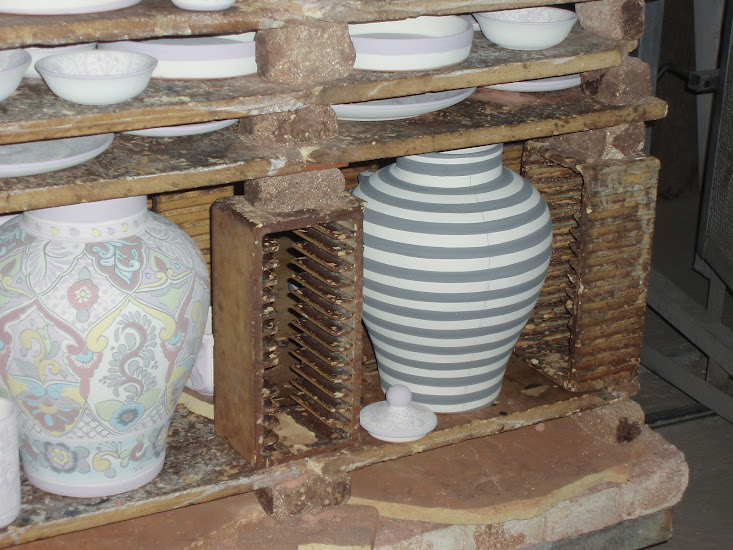 When the base glaze has dried, the artists paint the vibrant geometric designs with crisp edges. Watching them work, I’m always amazed at the precision – there’s no way to erase a mistake or a drip of the brush. The results are unique serving dishes, pottery planters, and other Mexican ceramics that truly stand out.
When the base glaze has dried, the artists paint the vibrant geometric designs with crisp edges. Watching them work, I’m always amazed at the precision – there’s no way to erase a mistake or a drip of the brush. The results are unique serving dishes, pottery planters, and other Mexican ceramics that truly stand out.
Talavera Vazquez continues to flawlessly combine traditional techniques with modern design. I’m excited to have new zigzag tibores in yellow and gray, as well as more blue and white pottery planters. With all their wonderful Mexican ceramics, I’m never sure what new discoveries I’ll make on my next visit. But I’m always thrilled to be able to share them with you!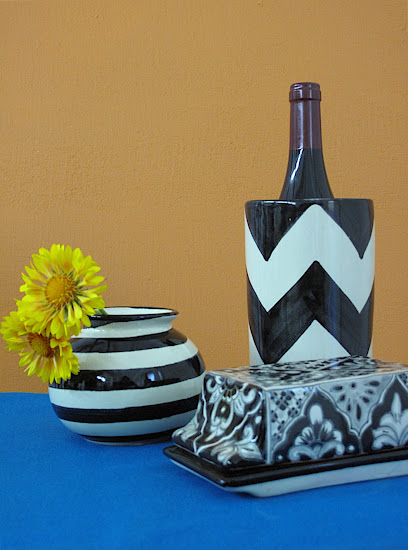



















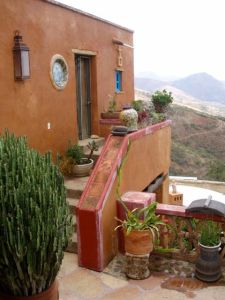


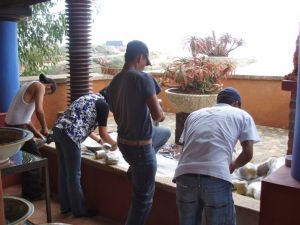
















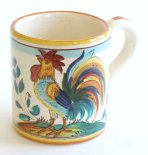










 Of course, you don’t have to display wall plates on a wall.
Of course, you don’t have to display wall plates on a wall. 

 There’s such a rich history of Mexican ceramic art: Like how Talavera Vázquez started a
There’s such a rich history of Mexican ceramic art: Like how Talavera Vázquez started a 







